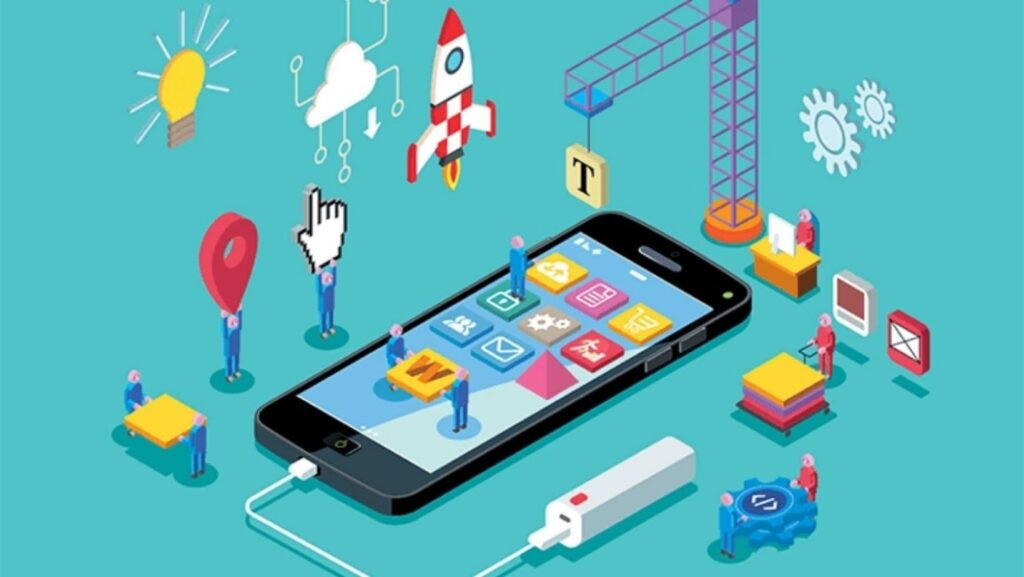This article will help you get a general idea of the application creation process.
There are seven stages of application development:
Product analytics.
- Specification and wireframes.
- Assessment and planning.
- Design.
- Programming.
- Testing.
- Application launch.
Let’s look at each stage: its tasks and results.
1. Product analytics
At the start, there is usually an introduction or “vision” of the product. However, there is insufficient formalization to begin development.
The stage’s goal is to figure out and formalize:
- CA;
- Product objective, KPI;
- USP: the product’s value to the target audience.
- Product hypotheses: top-level description of the functionality.
They begin by defining the product’s goal, such as selling a subscription or related goods. After that, examine the market and rivals, both direct and indirect. Finally, they describe the vision of the product and the principles and mechanics of its work. An MVP (minimum viable product) is being formed.
Learn more about the benefits of enterprise mobile app development by following this link: https://fireart.studio/enterprise-mobile-app-development/.
2. Specification and Wireframes
The stage’s goal is to create the technical specifications for the mobile application that developers will need. The application’s specification and wireframes are created to do this.
A specification is a document that provides a developer with a description of a mobile application. Namely:
- System logic, custom mechanics;
- Requirements for safety, reliability, and documentation;
- User interface requirements;
- Materials for filling the service.
The application development terms of reference are sometimes used. The specification, unlike it, does not specify how to implement it. The developer himself selects the optimal solutions. This method minimizes implementation time while maintaining the end system’s aesthetic, functionality, performance, reliability, and scalability.

3. Assessment and planning
A project estimate, or estimate, is created based on the requirements. The next portion of the paper explains the application development plan:
- The scope of work is a concise summary of the mobile application’s structure;
- Labor costs in hours by specialists;
- The cost of work;
- Implementation timeline;
- Risks, together with the likelihood of their occurrence and mitigation strategies.
4. Design
The stage’s goal is to build an application that is most effective for the product’s purpose. Namely, it is being developed:
- Design concept,
- A set of interface components (UI kit),
- design layouts,
- interactive prototypes.
First, a design concept is created. It reflects the style and general mood. They then create a user interface kit, which includes buttons, fields, and forms. You may speed up the design process by reusing pre-made parts.
Then they work through all the screens of the application, including various states: for example, with or without data. The last stage is to add UI animation to engage users and bring the app to life.
5. Programming
The stage’s job is to bring the product to life.
It is critical to consider future requirements. Lay the system architecture for future product scalability or heavy load, for example.

6. Testing
The stage’s job is to assure the product’s quality: fault-tolerance, dependability, and security. It is hard to avoid mistakes in advance due to the large variety of devices, operating systems, and displays, as well as the variable settings of installed software (applications) and device performance. As a result, a tester is frequently included in the development process, who works out numerous scenarios for the program and only releases it if it does not include serious errors in terms of the specification.
Testing has a professional who was not involved in the actual creation of the program examine the system’s quality, which enhances the chances of finding faults early in the development process.
7. Application launch
The app store version of the project has been published. AppStore and Google Play, respectively, for iOS and Android devices.
The application is regulated before it is made accessible to users. The length of the review is determined by a number of criteria, including the application’s category, history, developer, and the workload of the moderation team.
The project is deployed on a “combat” server. Set up a monitoring mechanism to verify that the program runs well.
If you need the development of a different profile – check out the offer of the cross platform app development company.














